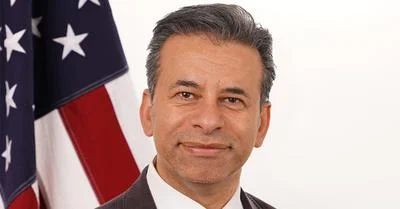The impacts of the COVID-19 pandemic have stretched and strained individuals and families across the country, highlighting the importance of a strong and resilient emergency food system, which includes organizations such as food banks, soup kitchens, food pantries, and more. These emergency food providers have been vital partners in USDA’s fight against food and nutrition insecurity throughout the pandemic. The Biden-Harris Administration is equipping them with significant levels of investments so they can continue serving their communities well through ongoing and evolving challenges. These investments focus on additional food purchases, improving infrastructure, supporting health and nutrition, bolstering local food systems, and promoting access and equity to continue to drive toward a stronger tomorrow.
As part of the Administration’s commitment to respond to current hardship and build back better, USDA is providing:
* An estimated $490 million in base funding for fiscal year 2022 (October 2021 - September 2022) for The Emergency Food Assistance Program (TEFAP), which provides food and administrative funds to states and tribes for distribution through organizations like food banks. This year’s funding includes an extra $58 million because of USDA’s recent re-evaluation of the Thrifty Food Plan - used in the annual calculation of TEFAP base funding - to ensure it reflects the true cost of a healthy, affordable, and practical diet.
* A $500 million temporary boost to TEFAP for this fiscal year made up of $400 million for food purchases, including nutritious fresh fruit and vegetable boxes, and $100 million in administrative funds. The administrative funds have already been distributed, and food deliveries are expected through summer 2022.
* A new $100 million grant program designed to help expand the reach of the emergency food system in underserved areas including remote, rural, tribal, low-income, or low food access communities. The first round of funding - $50 million - will be enable state agencies that operate TEFAP to implement unique, creative solutions to address program gaps and best serve their communities’ specific needs. The second round of funding may be available to other organizations in the broader emergency food system.
* First-of-their-kind cooperative agreements totaling $400 million to allow states and tribes to directly purchase local foods for distribution through emergency food providers.
* $7.5 million in grants for Farm to Food Bank projects that repurpose privately donated food that would otherwise be wasted for distribution through TEFAP. USDA awarded fiscal year 2022 funds to 29 states and territories in the largest round of these grants to date.
* As much as $700 million in commodity food support “bonus buys" - to be made based on market need throughout the coming year - for distribution through TEFAP.
In total, USDA expects to invest approximately $2 billion in the nation’s emergency food system in fiscal year 2022 with a goal of maintaining similar levels of support as in fiscal year 2021. This is in addition to resources from other federal agencies, such as the Department of the Treasury’s Coronavirus Relief Fund, which some states are using to help procure a continuous food supply for food banks and other emergency food providers.
Together, and in close collaboration with our partners in the emergency food system, we are helping to keep communities fed, healthy, and strong. The Biden-Harris Administration is equipping them with significant levels of investments so they can continue serving their communities well through ongoing and evolving
USDA is an equal opportunity provider, employer, and lender.
Source: U.S. Department of Agriculture Food and Nutrition Service






